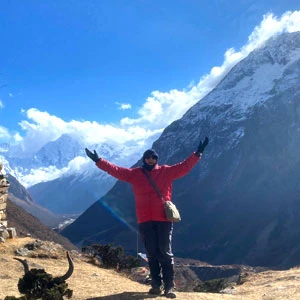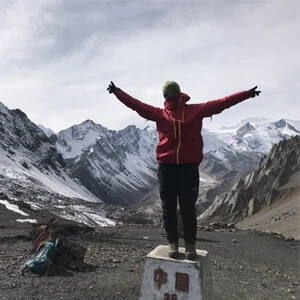Trishuli River Rafting
Nepal is without a doubt one of the most outstanding destinations for rafting and kayaking anywhere, an area that's increasingly finding itself at or near the top of bucket lists for whitewater enthusiasts around the world. Fueled by snowmelt from the mighty Himalayas, the country is a network of rivers cascading down through the mountain valleys, none more renowned than the formidable combination of the Trisuli and Budhi Gandaki rivers.
Easily accessible from either Pokhara, Kathmandu, or Chitwan, rafting on the Trisuli is a perfect introduction to the sport at very affordable prices. With moderate grades on offer during the river’s quieter moments, the waters can build to a roiling and threshing torrent of rainwater during the monsoon season as the pouring rains engorge the river with the runoff, particularly so when it merges with the Budhi Gandaki to create conditions that are the stuff of legend for expert kayakers, not least because of the spectacular mountain scenery that adds even more to the experience.
The journey begins with a 2.5-hour drive from Kathmandu to the launch point on the Trisuli, where the guide will run through the details, provide you with the appropriate safety gear, and introduce you to the other members of the rafting trip, typically a group of six to seven people. Then it’s on to the river and the roller coaster rides through the whitewater until the lunch break, followed by another two hours of thrills and spills before the guide draws the adventure to a close by the vehicle waiting to return you to either Kathmandu, Pokhara, or Chitwan.
Whitewater rafting is an extraordinary experience, and Nepal Trekking Experts is the agency of choice to arrange for your ride on the Trisuli, so why not get in touch with our staff and discuss the options?
Note: The above is just a guideline, and the entire trip can be extended or amended to suit your requirements - all you have to do is ask.
Views And Scenery Along The Trishuli River
As you glide along the Trishuli River, you are surrounded by rolling green hills, terraced farmlands, and dramatic river gorges. The sight of traditional Nepali villages perched on the hillsides offers glimpses of rural life untouched by time. During your rafting adventure, the river’s pristine waters reflect the vibrant blue sky above. Likewise, the sandy riverbanks provide tranquil spots to pause and soak in the beauty of the surrounding wilderness. If you are lucky, you might even catch a glimpse of diverse bird species and wildlife that inhabit the river’s ecosystem.
Rafting Experience On The Trishuli River
The Trishuli rafting journey begins with a safety briefing by experienced guides. As you launch into the waters, you get to navigate through waves and currents that challenge both beginners and seasoned rafters alike. The river’s ever-changing flow keeps you on your toes and moments where you can relax and connect with nature.
Best Time For Whitewater Rafting
For the ultimate Trishuli rafting experience, the Spring and Autumn months are considered ideal. From March to May, the rivers are fed by melting snow from the mountains, creating a moderate flow perfect for thrilling rapids without being too overwhelming for beginners. During these months, the temperature is warm with clear skies and blooming flora along the riverbanks.
Moving on, Autumn, from September to November, offers equally spectacular conditions. After the Monsoon rains have subsided, the rivers settle into a balanced flow. During this season, you will find crisp, clear air provides breathtaking views of surrounding landscapes, while the golden hues of autumn leaves add a magical touch to the adventure.
For adrenaline junkies, the Monsoon season (June to August) brings high water levels and powerful rapids, offering a heart-pounding challenge. If you are experienced and looking for huge volume of water with strong rapids, then the monsoon might be the best.
Likewise, Winter rafting provides less water volume and fewer rapids. It might be the best experience for beginners and kids as well.
Who Can Join The Trishuli River Rafting?
The Trishuli River Rafting adventure is open to anyone seeking a mix of excitement and natural beauty. Whether you are an experienced rafter or a first-timer, the Trishuli River offers rapids that cater to all skill levels. Families with children, groups of friends, corporate teams, and even solo travelers can enjoy the thrill of navigating through its scenic waters.
This adventure is not limited by age or experience, as long as participants have basic swimming skills and a spirit of adventure. With proper safety gear, expert guidance, and a well-organized itinerary, the Trishuli River Rafting experience is designed to welcome people from all walks of life.




